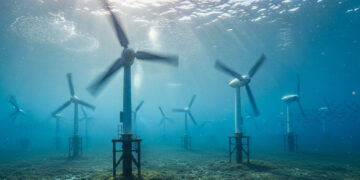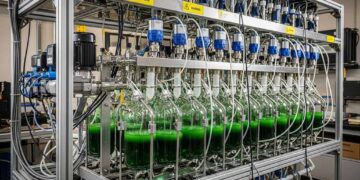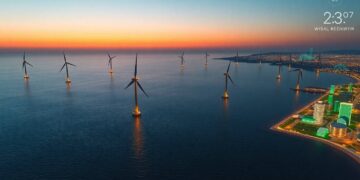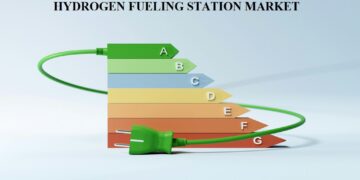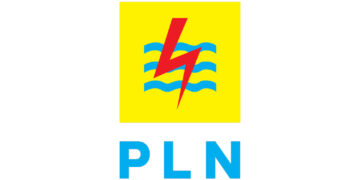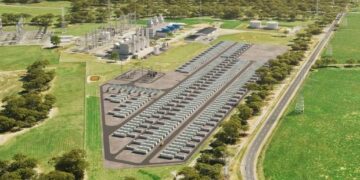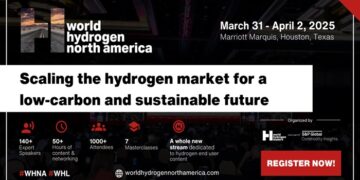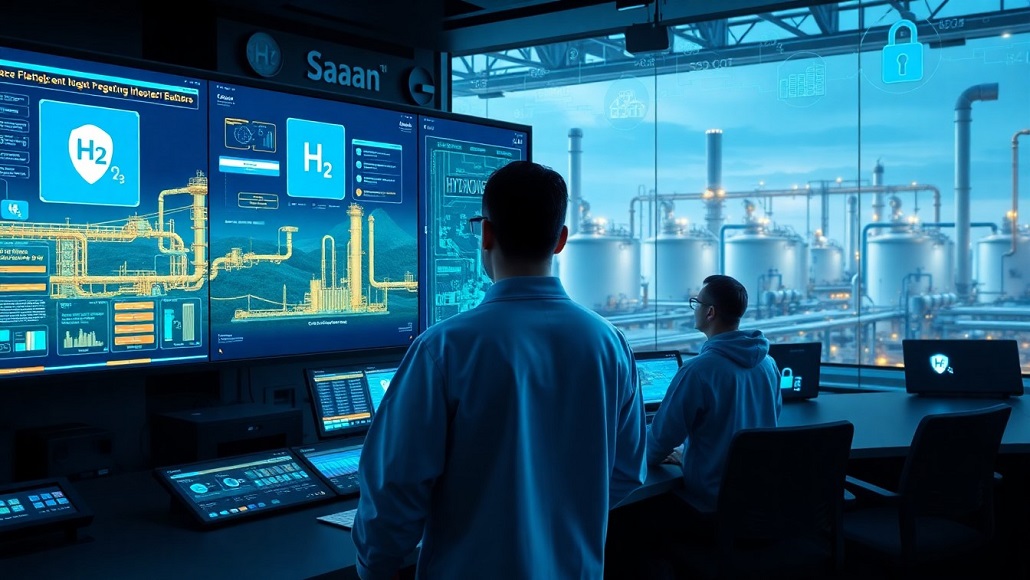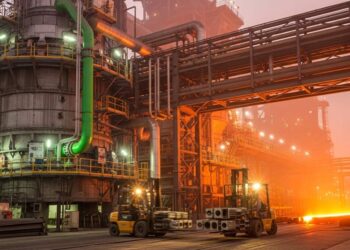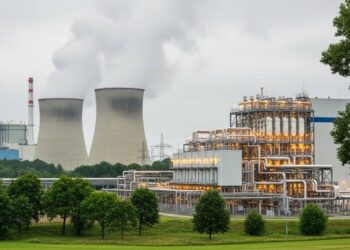As the world transitions toward cleaner energy solutions, hydrogen is emerging as one of the most promising technologies for decarbonizing critical sectors such as transportation, industry, and power generation. The hydrogen economy is not merely producing and delivering hydrogen—it is increasingly about how smart hydrogen infrastructure is created using advanced digital technologies. These networked systems, fueled by Industry 4.0 technologies, allow for real-time control, monitoring, and optimization of hydrogen generation, storage, delivery, and consumption.
While these developments create immense opportunities to enhance efficiency and scalability, they also place the hydrogen industry at risk from genuine cybersecurity threats. Coupling IoT devices, cloud infrastructures, AI-driven monitoring systems, and digital twins raises the attack surface, and smart hydrogen infrastructure thus becomes an attractive target for cybercriminals, state-sponsored hackers, and malicious insiders. Safeguarding these critical networks is crucial not only for business continuity but also for avoiding large-scale disruptions to the nascent hydrogen economy.
The Digital Transformation of Hydrogen Infrastructure
The evolution of hydrogen infrastructure towards a digital, smart, connected, and integrated ecosystem is largely moving forward with the deployment of advanced technologies such as IoT, big data analytics, and artificial intelligence. Using these techniques enables organizations to monitor hydrogen production, distribution, and storage networks in real time and provide actionable insights in order to increase efficiency and reduce costs.
Electrolysers, refuelling stations, and storage units are now fitted with IoT sensors that continuously monitor parameters like pressure, temperature, and flow rate. The data is passed to centralized control systems where AI algorithms process and interpret it in order to foretell maintenance requirements, pinpoint inefficiencies, and check up on safety compliance.
The Cybersecurity Risks of Digitalization
Digital transformation also allows adversaries to exploit new vulnerabilities when launching their cyberattacks. Though the digital transformation of hydrogen systems provides many benefits, if cyberattacks are successful, they could disrupt ration hydrogen smart infrastructure operations, negatively impact safety, and reduce public trust in hydrogen as a source of reliable energy.
Ransomware attacks are one of the gravest risks today, during which hackers hold key systems hostage and ask for money to unlock them. Imagine a dilemma where a hydrogen refueling system is halted due to a ransomware attack and fuel cell vehicles are stuck, while supply chains halt as they cannot continue operation without fuel.
Data breaches are another danger, which is when hackers steal or leak sensitive information (operational metrics, system configurations, user data). Hackers can then use this data for targeted attacks, manipulate activities, or sell the proprietary information to a competitor.
Secondly, IoT equipment frequently acts as an entry point for cyber threats. Most IoT equipment in the hydrogen infrastructure does not have strong security measures and is thus vulnerable to unauthorized access, manipulation, and malware injection. If an attacker has taken over an IoT device, they will be able to in all probability breach the entire network, leading to cascading failures.
Cybersecurity Solutions for Hydrogen Infrastructure
Addressing smart hydrogen infrastructure cybersecurity challenges needs a multi-layered strategy that integrates technology, process improvement, and human elements. The following are essential measures for constructing a resilient and secure hydrogen network:
- Implementing Zero-Trust Architecture for Enhanced Security
The zero-trust model is a cybersecurity paradigm shift from the classic perimeter-based security systems. The security system no longer assumes trust on the user’s or device’s status in the network, but rather will require strict authentication for all access requests, from wherever they come from.
For hydrogen infrastructure, the adoption of zero-trust elements provides an essential layer of security to protect the infrastructure by preventing improper access to key systems and stopping data leaks. Network segmentation is a focal point in this approach, separating sensitive systems like control platforms for electrolysers and storage tanks from less sensitive applications. This segmentation prevents an attacker who manages to get into one segment of the network from moving laterally freely to affect other systems.
Multi-factor authentication is another component of zero-trust security. Multi-factor authentication removes the chance of unauthorized access by requiring multiple layers of authentication (e.g. biometrics, one-time passcode), before access is granted. Continuous monitoring is another important part of zero-trust architecture. Sophisticated security tools enabled by artificial intelligence continuously watch for user activity and traffic patterns across the network and identify anomalies that could be signs of an intruder.
- Enhancing IoT Device Security to Protect Entry Points
IoT devices are the backbone of smart hydrogen infrastructure, with the ability to collect and communicate in real-time between systems. Yet such devices are typically the weakest point in cybersecurity with their limited processing ability, which hinders their use of sophisticated security features. IoT security is essential to protect the wider hydrogen ecosystem.
Encryption of communication pathways is necessary to safeguard data being sent by IoT devices. For example, sensors measuring hydrogen pressure and flow rates on tank storage must utilize end-to-end encryption so that intercepted data cannot be tampered with by hackers. Likewise, secure authentication of devices makes certain that only authorized devices can communicate on the network to minimize chances of malicious devices finding their way into critical systems.
Another fundamental feature of IoT security is frequent updating of device firmware to rectify recently discovered vulnerabilities. Hydrogen infrastructure operators must partner with IoT device makers to establish automatic update functions, whereby security patches are automatically delivered and installed without human intervention.
To further reinforce security, IoT devices need to be set up on the least privilege. This involves restricting each device’s access to just the functions that are needed for its particular purpose.
- Leveraging AI and Machine Learning for Threat Detection
Artificial intelligence and machine learning technology are transforming cybersecurity by allowing predictive threat detection and incident response at the speed of minutes. AI-driven systems examine massive historical and real-time datasets to identify patterns and anomalies that could represent malicious activity.
For hydrogen infrastructure, AI systems will be able to track network traffic, device activity, and process parameters to identify the initial indicators of cyberattacks. For instance, unexplained changes in network traffic from a hydrogen fuelling station can be an indicator of a distributed denial-of-service (DDoS) attack. AI algorithms can alert to such anomalous behavior and activate responses automatically, for instance, isolating the compromised system to avoid letting the attack propagate.
Machine learning models are also instrumental in creating adaptive security controls. They learn from new data in real-time and improve their threat detection capabilities as well as the ability to identify legitimate versus malicious activity. This flexibility is especially beneficial in hydrogen infrastructure, where operation environments and attack surfaces shift and change continuously.
Predictive maintenance is another function where AI strengthens cybersecurity. Analyzing data from IoT devices, AI systems can detect the onset of machinery failure due to cyber-attacks or normal wear and tear.
- Cultivating a Culture of Cybersecurity Through Training
While advanced technologies play a significant role in securing hydrogen infrastructure, human factors remain a critical vulnerability. Employees, contractors, and other personnel with access to critical systems must be trained to recognize cybersecurity threats and respond appropriately.
Routine training courses must include training in areas like detecting phishing emails, developing robust passwords, and adhering to preset protocols for accessing secure systems. For instance, staff members must be trained to check unfamiliar emails prior to opening attachments or clicking links, as these might be attempts at phishing in order to grab login credentials.
Aside from technical education, it is also imperative to develop an atmosphere of vigilance and accountability. Organisations must encourage their staff to report possible security breaches without fear of backlash, that the threats would immediately be tended to. An educated workforce is the first line of defense against cyber threats, minimizing the chances of human error affecting mission-critical systems.
Simulation drills, including simulated cyberattacks, can also increase readiness. Simulation drills enable teams to rehearse responding to different situations, including ransomware attacks or IoT device invasions, so that they are able to respond with speed and efficiency when a real situation arises.
- Implementing Layered Cybersecurity Frameworks
Cybersecurity for hydrogen infrastructure must not be based on one solution. Rather, a multi-layered solution that includes several security elements placed across various points of the system is required for full protection. This system guarantees that even if one layer fails, others are still in place to safeguard key assets.
For instance, a multi-layered security system for a hydrogen refuelling station could have:
- Perimeter security controls, e.g., firewalls and intrusion detection systems, to observe network traffic.
- Endpoint security for IoT devices, e.g., encryption and secure boot processes.
- Application security for safeguarding software systems utilized for monitoring and control.
- Data security controls, e.g., access controls and backups, to preserve the integrity and availability of essential information.
- By using multiple lines of defense, operators can develop a robust security posture that can withstand advanced cyberattacks.
Future Outlook
With the growth of the hydrogen industry, security will continue to be at the top of the agenda to guarantee the resilience and reliability of smart hydrogen infrastructure. Blockchain, quantum computing, and edge computing technologies are promising ways to develop solutions to currently existing vulnerabilities and implement stronger security mechanisms.
Blockchain technology, for example, can offer a secure and tamper-proof record of data exchanges and transactions, increasing transparency and trust. The same will be true for quantum-resistant encryption algorithms as quantum computing goes mainstream.
The hydrogen economy is a defining moment in the battle against climate change, and cybersecurity will play a fundamental part in protecting this clean energy revolution. By embracing proactive measures and collaboration, stakeholders can create a future with smart and secure hydrogen infrastructure.








